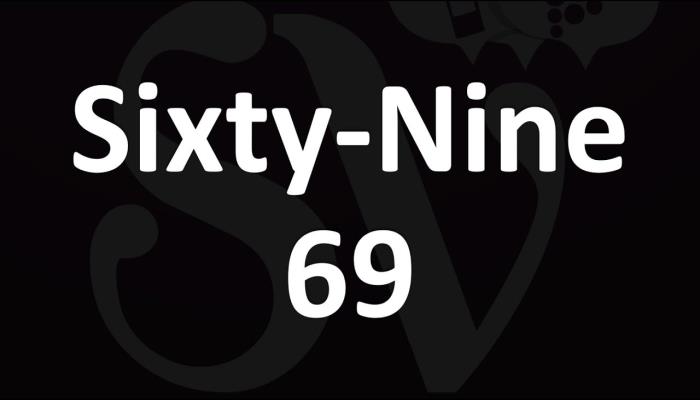Understanding the Meaning of 69: A Comprehensive Guide

Introduction
We’ve all come across the infamous number ’69’ at some point in our lives, whether in casual conversations, movies, music, or internet memes. It’s a number that often raises eyebrows, elicits chuckles, or leaves people intrigued. But what does ’69’ actually mean? In this comprehensive guide, we’ll delve into the multifaceted meaning of 69, exploring its historical origins, its sexual connotation, its prevalence in popular culture, and much more. Buckle up as we uncover the mysteries behind this enigmatic number!
Historical Origins: Meaning of 69
To truly understand the meaning of 69, we must take a step back in time to uncover its historical roots. Believe it or not, ’69’ isn’t just a modern invention; it has historical significance dating back centuries.
The term ’69’ is believed to have its roots in the ancient Indian text, the Kamasutra. This 2nd-century Sanskrit manual of sexual positions and techniques features an illustration known as “sixty-nine” or “69.” In this position, two individuals align themselves in such a way that their heads are near each other’s pelvises, creating a numerical representation of ’69.’
In the Kamasutra, ’69’ is depicted as a sensual and intimate position that allows for simultaneous oral-genital stimulation between partners. This ancient representation of ’69’ laid the groundwork for its sexual connotation in modern times.
Definition of ’69’
Now that we’ve established its historical context, let’s dive into the primary definition of ’69’—its numerical representation. In its simplest form, ’69’ is merely a number, and its significance as such is often overlooked. However, when flipped upside down, ’69’ maintains its identity, making it a unique and symmetrical number.
But that’s just the tip of the iceberg. ’69’ is most widely known for its sexual connotation. In this context, ’69’ refers to a sexual position where two partners align themselves in a way that allows for simultaneous oral-genital stimulation. This position has become a symbol of mutual pleasure and intimacy, often associated with adventurous and open-minded couples.
It’s important to note that while ’69’ is a commonly known sexual term, it’s typically used in informal and adult-oriented conversations. Its explicit nature means that it may not be suitable for all audiences, so discretion is advised when discussing it.
Popular Culture References
From rock songs to comedy sketches, ’69’ has made its mark in various forms of media and entertainment. Its provocative nature and intriguing symbolism have captured the attention of artists, musicians, and comedians worldwide.
One of the most famous references to ’69’ in popular culture is the 1969 hit song “Suite: Judy Blue Eyes” by Crosby, Stills & Nash. In this song, the line “It’s getting to the point where I’m no fun anymore, I am sorry” is repeated multiple times, which some listeners interpret as a hidden reference to the sexual position ’69.’
Additionally, comedy shows and stand-up comedians have used ’69’ as a source of humor. The double entendre associated with ’69’ provides comedians with ample material for jokes and innuendos, adding a playful and risqué element to their performances.
Internet Memes and Trends
The internet has a way of turning anything into a meme, and ’69’ is no exception. In the world of memes and online culture, ’69’ has become a symbol of both humor and rebellion. It often appears as a playful reference, sometimes accompanied by winking emojis or humorous captions.
One of the most popular internet trends related to ’69’ is the “Nice” meme. When someone mentions the number ’69’ or something related to it, the response from others is often a simple “Nice.” This minimalist response has become a humorous way to acknowledge the implicit connotation of ’69’ without delving into explicit details.
Double Entendre and Humor
One of the fascinating aspects of ’69’ is its use as a double entendre—a term with both a literal and a suggestive meaning. This dual nature allows for a wide range of humorous interpretations.
Comedians, in particular, have a field day with ’69,’ using it as a source of jokes and innuendos. Whether it’s puns, wordplay, or clever one-liners, the double meaning of 69 provides ample material for humor. Here are a few examples:
- “I used to be 69 inches tall, but then I grew a bit.”
- “Why did the math book blush? Because it saw too many ’69’s in its pages!”
- “I tried to make a ’69’ joke, but it just wasn’t ‘erotic.'”
These playful interpretations add a lighthearted and comedic dimension to the otherwise intimate symbolism of ’69.’
Controversies and Misinterpretations
Of course, with such a provocative number, there are bound to be controversies and misunderstandings. One common misconception is that ’69’ is solely about pleasure and lacks emotional intimacy. In reality, like any sexual activity, the meaning and experience of ’69’ can vary greatly between individuals and couples. For some, it may be a fun and playful activity that fosters intimacy and trust, while for others, it may not hold the same appeal.
Additionally, ’69’ is often associated with open-mindedness and sexual exploration, but it’s essential to remember that all sexual activities should be consensual and respectful of the boundaries and comfort levels of both partners. Communication and consent are crucial in any intimate relationship.
Cultural and Regional Variations
Did you know that the meaning of 69 can vary across cultures and regions? In some cultures, the concept of ’69’ may not exist at all, while in others, it may have a different name or interpretation.
In Japan, for example, there is a similar position known as “shuku-shuku,” which is a variation of ’69.’ In this position, partners align themselves similarly to ’69,’ but with a more relaxed and less simultaneous approach. Cultural differences like these highlight how the interpretation of ’69’ can vary around the world.
Beyond cultural variations, regional slang and terminology can also influence how ’69’ is understood. It’s essential to be aware of these differences when engaging in conversations that involve explicit or sensitive topics.
Beyond Sexual Connotation
While ’69’ is most commonly associated with its sexual connotation, it’s important to recognize that the number itself has meanings beyond the bedroom. Here are a few examples of how ’69’ can be interpreted in different contexts:
- Numerical Significance: In mathematics and science, ’69’ is simply a number with its unique properties and applications. From algebraic equations to physical constants, ’69’ appears in various mathematical and scientific contexts.
- Historical References: ’69’ can also refer to historical events or periods. For instance, the “Year of the Four Emperors” in ancient Rome occurred in the year 69 AD when four different emperors ruled within a single year.
- Symbolism: In numerology and esoteric traditions, numbers often carry symbolic meanings. ’69’ may be interpreted as a symbol of balance, harmony, and the merging of opposites due to its mirrored and intertwined digits.
- Personal Associations: Some individuals may have personal associations with ’69,’ such as birthdays, anniversaries, or lucky numbers, that have nothing to do with its sexual connotation.
Conclusion
In conclusion, ’69’ is more than just a number; it’s a symbol of curiosity, humor, and cultural evolution. By understanding its many facets, we gain insight into the complex ways language and symbolism shape our world. Whether you encounter ’69’ in a mathematical equation, a historical reference, a comedy sketch, or an internet meme, it’s a reminder of the versatility of language and the varied interpretations of a seemingly simple number.
As with any topic, it’s essential to approach discussions involving ’69’ with sensitivity and respect for different perspectives. While it may be a source of humor and innuendo for some, it can also be a meaningful and intimate experience for others. Ultimately, the meaning of 69 is as diverse as the individuals and cultures that encounter it.



